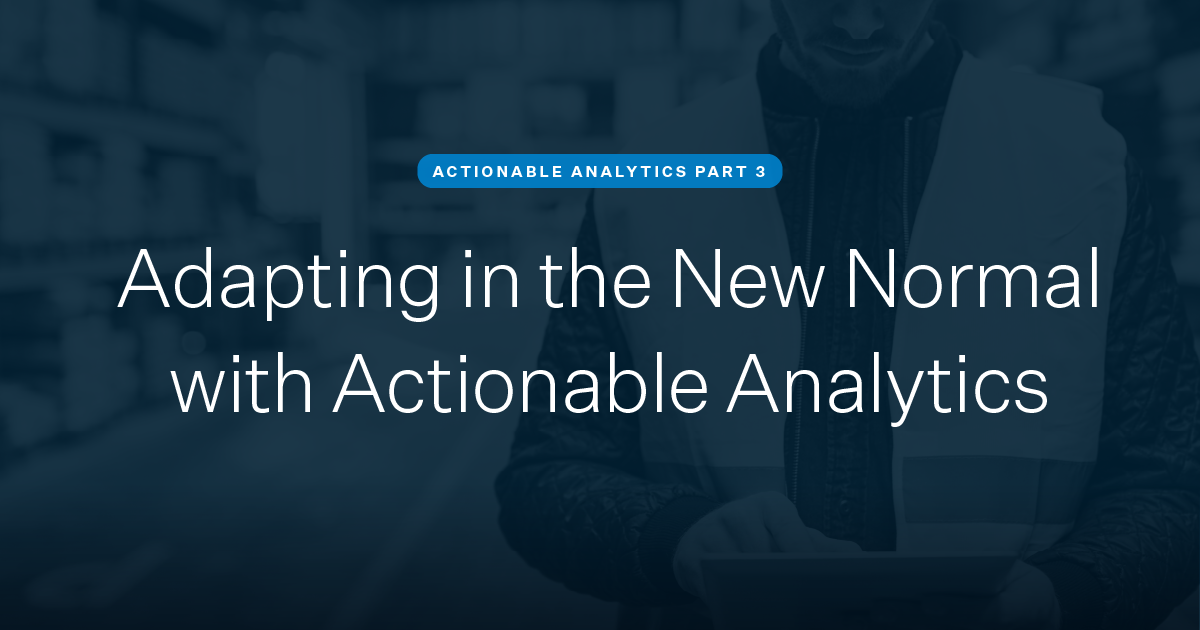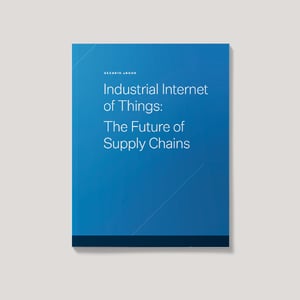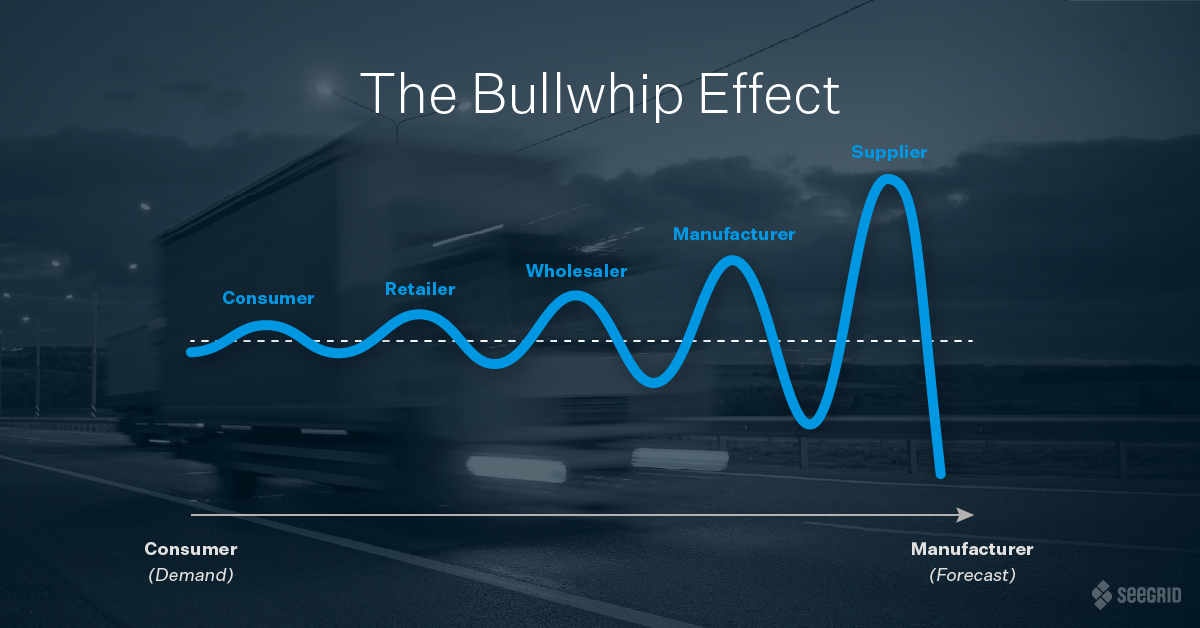A year that brought on unpredictability and uncertainty like never before put a spotlight on the use of automation in manufacturing, warehousing, and logistics facilities. The COVID-19 pandemic quickly caused many unexpected disruptions that shook supply chains worldwide.
Navigating the New Normal for Supply Chains
A recent survey showed that only 10% of supply chains felt completely prepared to handle the COVID-19 impacts, and 94% of Fortune 1000 companies indicated that they are seeing coronavirus supply chain disruptions.
COVID-19 stimulated unprecedented growth for e-commerce with dramatic spikes in product demand. As a result of business restrictions, social distancing measures, and concerns for personal safety, consumer behaviors shifted from primarily shopping at brick and mortar stores to online outlets. Now, many companies are experiencing peak season and Black Friday level e-commerce demand on a daily basis.
This extreme uptick in e-commerce sales adds heightened pressures and challenges for supply chains. Manufacturing and distribution facilities are now faced with new social distancing requirements for employees, additional labor challenges, and pressures to deliver a higher volume of goods, all which reinforce the importance of supply chain flexibility.
Now more than ever, it is critical for material handling facilities to integrate automation solutions that allow for flexibility and visibility in order to remain competitive and profitable. The key to overcoming disruptions, no matter the cause, is supply chain agility. In this final segment of the Actionable Analytics Series, we outline how to create an agile operation to thrive during unexpected circumstances.
Design for Change with Flexible AGV and AMR Solutions
When building an automation project, design for change. Assume that adjustments will need to be made over time in order to adapt to different variables. Select an automation solution that allows for changes to be made with little effort while also providing the ability to redeploy robots to different tasks and shifts.
Traditional automated guided vehicles (AGVs) navigate based on built-in physical infrastructure. These vehicles follow wires or magnetic tape embedded in the floor or by using lasers and reflectors placed throughout the facility. In order to make changes, the infrastructure would need to be removed and rebuilt, costing extended production downtime and additional spend. By choosing an infrastructure-free solution, the reliance of such substructures is eliminated, which provides the flexibility to easily make changes.
Additionally, not all infrastructure-free autonomous mobile robots (AMRs) and AGVs are created equal. Seegrid Palion autonomous mobile robots (AMRs) can easily be retrained in-house to tackle new routes, tasks, or environments. Simply drive the Palion AMR on the new route one time, and it is ready to take on its new challenge — without any assistance from Seegrid representatives. Once a robot is trained, the routes can easily be shared across the entire fleet, allowing facilities to quickly scale. Seegrid AMRs are designed for flexibility by putting the power in the hands of the facility personnel, avoiding costly downtime, lost profits, and additional support costs.
Whether you are adapting to unexpected disruptions, planning for seasonal peak periods, redeploying robots to different shifts, or scaling to accommodate for growth, ensure that the automation solution is flexible. However, creating a completely agile operation goes beyond the hardware — data is the key to effective agility.
AGV and AMR Data Visibility is Essential for Success
As automation technologies continue to become more common and accepted across manufacturing, distribution, and logistics facilities, it becomes even more critical to have a holistic, data-driven understanding of the facility in order to continue improving, adapting, and achieving a strong ROI. Unfortunately, supply chain visibility is a common pain point for many companies. Most companies feel like they don’t have a good understanding of their data, either getting flooded with too much information which creates analysis paralysis or having a lack of visibility all together.
Automation solutions can help provide visibility into entire facilities, tracking activity and utilization of the robots. However, the quantity and complexity of the information gathered isn’t the moral of the data story – rather, it’s the depth of understanding of the data that matters.
When collecting information, aim to curate data points that help achieve specific business outcomes. Additionally, ensure that the data is actionable by following the three pillar system we introduced in Actionable Analytics Part 1. First, ensure that the data is understandable to those who will be taking action. Second, the data should be delivered in a timely manner, providing enough time for action to be taken. And finally, the data should be presented in a way that is contextual to the workflow. When these three pillars are accomplished, actionable analytics can then be performed on a tight loop of analyzing data that drives action to continuously make improvements.
Improve Visibility to Avoid Disruption and Drive Results
Automation has proven itself to provide substantial benefits, including increased productivity, safety, and scalability. However, realizing the full potential of automation requires visibility into data that allows the employees and technology to effectively work together. Connected supply chains that combine flexible automation with data visibility can achieve success.
Actionable analytics play a major role in achieving Industry 4.0 initiatives. Real-time data insights allow facilities to better understand what is working well and where refinements can be made. Efficiently being able to access and understand data provides transparency for faster, more confident decision making with immediate results, while also giving added flexibility to deal with the unexpected. Not only can data help optimize performance, but it can also help prove ROI with objective details, and advance initiatives to continuously improve and scale.
To conclude the Actionable Analytics Series, we urge material handling facilities to utilize the three pillar system that forms the foundation of actionable analytics to confidently streamline for efficiencies, tackle day-to-day challenges, and adjust to unexpected disruptions. Technology and demands will only continue to become more complex, making the effective use of data that much more powerful. Start driving results with actionable analytics to ensure success today and as you scale over time.


 Supply chains are increasingly
Supply chains are increasingly 




